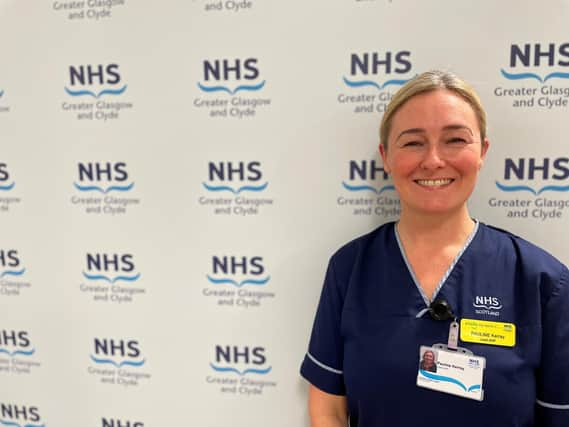East Dunbartonshire sprain patients urged to use virtual A&E


The call comes as NHSGGC recorded 158 physical A&E strains and sprain patients over the course of a week – all of who could have been seen faster through its virtual service .
Also known as the Flow Navigation Centre, the virtual A&E service sees and treats more than 1,500 patients every month through emergency video and telephone consultations. The service is highly experienced in managing sprains and strains and if further treatment is required, patients are given scheduled arrival time at a Minor Injuries Unit, helping them avoid a potentially long wait for treatment.
Advertisement
Hide AdAdvertisement
Hide AdFor the 158 sprain and strain patients who opted to go straight to a physical A&E, the average waiting time around two hours in a busy waiting room, with one patient waiting upwards of five hours as higher priority cases took precedence.
In contrast, the average waiting time for sprains and strains patients referred to the Flow Navigation Centre is less than one hour and patients received treatment from the comfort of home at an agreed appointment time.
Modelling from the Health Board suggests upwards of 100,000 patients per year could be seen through the virtual A&E and patients who think they need to visit A&E are encouraged to use it as the first port of call.
Pauline Kerray is an Emergency Nurse Practitioner from NHSGGC’s Flow Navigation Centre. Pauline said:
Advertisement
Hide AdAdvertisement
Hide Ad“The Flow Navigation Centre is an ideal set-up for sprains and strains patients. When you speak to us, we’ll evaluate your injury, provide advice and we can book you in for onward treatment if necessary. If we think you need an X-ray, you’ll get a time to attend the nearest MIU, meaning you avoid A&E altogether. The key point to remember is to call us first before you make a trip to the hospital.”
The Flow Navigation Centre, which launched in December 2020, has now seen more than 30,000 patients. It operates every day and is staffed by a team of highly experienced nurses and doctors. Patients can find out more info about the service by visiting the NHSGGC website